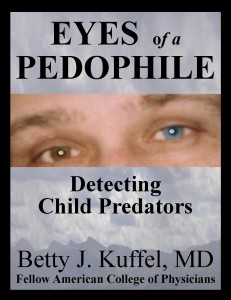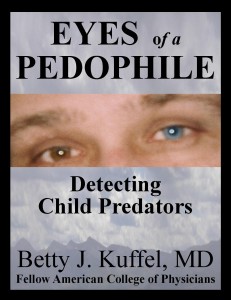Today, psychologist Carolyn Kaufman, author of The Writer’s Guide to Psychology (Quill Driver Books, 2010), and I trade perspectives on the insanity defense. You can read my post on the legal issues of insanity on the Query Tracker blog .

Psychological Disorders and the Insanity Defense
When people hear the word “insanity,” most assume they’re talking about a psychological term (or maybe even a psychological diagnosis). In fact, insanity is a legal term, which means that a courtroom is the only place that a person can be declared insane. However, psychologists and psychiatrists can help determine whether someone has a psychological condition that will let the defense argue that the defendant should be declared “not guilty by reason of insanity” (NGRI).
So what does it mean to be NGRI? “Currently,” writes Leslie Budewitz in Books, Crooks, and Counselors, “in federal cases, the defendant must prove that he has a ‘severe’ mental disease that made him ‘unable to appreciate the nature and quality or the wrongfulness of his acts.’” In other words, the individual must be so psychologically disturbed that she or he (we’ll use he for the sake of simplicity in this post) was not able to understand at the time he was committing the crime that what he was doing was wrong.
In psychological terms, that usually means the individual was psychotic. Psychosis means that someone has lost touch with reality the way most people experience it. The two most common symptoms of psychosis (though both do not need to be present for psychosis to be diagnosed) are hallucinations and delusions. Writers often use the terms “hallucination” and “delusion” interchangeably, but they are not synonymous.
Hallucinations are sensory experiences in the absence of sensory stimuli. In other words, the person is seeing, hearing, feeling, smelling, or tasting something that isn’t there. Someone who is hearing voices, for example, would be said to be hallucinating.
Delusions are problematic beliefs that are not based in reality and which cannot be shaken with logic. The belief that one’s thoughts are being stolen and recorded by, say, the FBI or aliens is delusional.
The disorder most often associated with psychosis is schizophrenia. (Note: Schizophrenia is not the same thing as dissociative identity disorder, sometimes called multiple personality disorder. People with schizophrenia only have one personality.) In addition to hallucinations and delusions, some people with schizophrenia experience disorganized thoughts, speech, and behavior. That doesn’t mean they’re messy people—it means their behavior is odd, even bizarre. Words and phrases may be jumbled together in a nonsensical fashion. Though the media is usually quick to look for schizophrenia in people responsible for mass shootings, Jared Lee Loughner, the man who opened fire in Tucson in January 2011, is one of the few who clearly does have schizophrenia.
Bipolar disorder, once called manic depression, can also cause hallucinations and delusions, usually in the manic phase. There is also a small handful of other psychotic disorders. These include delusional disorders, in which someone has delusions but no other symptoms of a disorder like schizophrenia or bipolar disorder.
If you decide to portray a psychotic disorder, be aware that although symptoms for disorders like schizophrenia and bipolar disorder can worsen at times due to, say, stress, they should not just appear and disappear when it is most convenient for the author. Psychotic disorders and bipolar disorder are severe, life-changing problems that generally require medication (antipsychotics for psychotic disorders and, in the case of bipolar disorder, mood stabilizers) as well as therapy to learn to manage the disorder.
One diagnosis that will not earn your character a NGRI determination is psychopathy, in which the individual knows exactly what he’s doing and that it’s wrong—he just doesn’t care. A psychopath is stone-cold sane. Because there is no entry for “psychopathy” in the current version of the psychological diagnostic manual (DSM-IV-TR), people who violate others’ rights and break laws with this lack of conscience are diagnosed with antisocial personality disorder (APD). Not because they withdraw from society or isolate themselves (they don’t), but because they are anti-society. They flagrantly violate others’ rights and cause problems for society.
Only the very worst cases of APD qualify as true psychopathy. Psychopaths are whimsical, reckless, callous, cold, and cruel. They are your serial killers. (Serial killers are rarely psychotic, because psychotic people are not able to be organized and deliberate enough to hide their crimes long term.) If they’re charismatic and intelligent, they might also become CEOs, politicians, or other people of power and influence. (For more on this topic, check out Paul Babiak and Robert Hare’s book Snakes in Suits: When Psychopaths Go to Work .)
True psychopaths are thought by experts like Robert Hare to be born the way they are. They are your proverbial “bad seeds.” (For more information on how the brains of psychopaths are different from those of other people, check out The Writer’s Guide to Psychology! ) If you want to see the difference between someone who’s psychotic and someone who’s psychopathic, compare John Nash in A Beautiful Mind (schizophrenia, though far from a perfect portrayal of it) to Hannibal Lecter in Silence of the Lambs (psychopathy).
I mentioned dissociative identity disorder (DID) earlier, and though there have been historical cases of people being declared NGBI due to DID, that is much more unlikely in a modern environment. Why? First, because people with DID are not psychotic. Add to that the fact that DID is one of the most—if not the most—controversial diagnosis in psychology. There is strong evidence that, at least in some cases, the disorder is “iatrogenic,” which means it has been created by the therapist in a suggestible individual. The famous case of Sybil, for example, was iatrogenic, created by a therapist interested in fame. (For more information, check out Debbie Nathan’s book Sybil Exposed .)
To summarize, only in a courtroom can it be decided whether someone is legally sane or insane—but a psychologist or psychiatrist may be asked whether a defendant is (and/or was at the time of the crime) psychotic to determine whether he should be declared NGRI.
Finally, as Leslie Budewitz mentions in Books, Crooks, and Counselors, NGRI is not—contrary to popular belief—a plea that is often used successfully in court: “Justice Department statistics say the defense is raised in only about 1 percent of cases, and succeeds in only 25 percent of those.” It is also not a Get Out of Jail Free card. In fact, on average, a person declared NGRI spends more time in a psychiatric facility than he might have spent in jail.
 Carolyn Kaufman, PsyD, is the author of The Writer’s Guide to Psychology: How to Write Accurately About Psychological Disorders, Clinical Treatment and Human Behavior (Quill Driver Books, 2010) which helps writers avoid common misconceptions and inaccuracies and “get the psych right” in their stories. She also blogs for Psychology Today and the QueryTracker Blog .
Carolyn Kaufman, PsyD, is the author of The Writer’s Guide to Psychology: How to Write Accurately About Psychological Disorders, Clinical Treatment and Human Behavior (Quill Driver Books, 2010) which helps writers avoid common misconceptions and inaccuracies and “get the psych right” in their stories. She also blogs for Psychology Today and the QueryTracker Blog .
Thanks, Carolyn!








